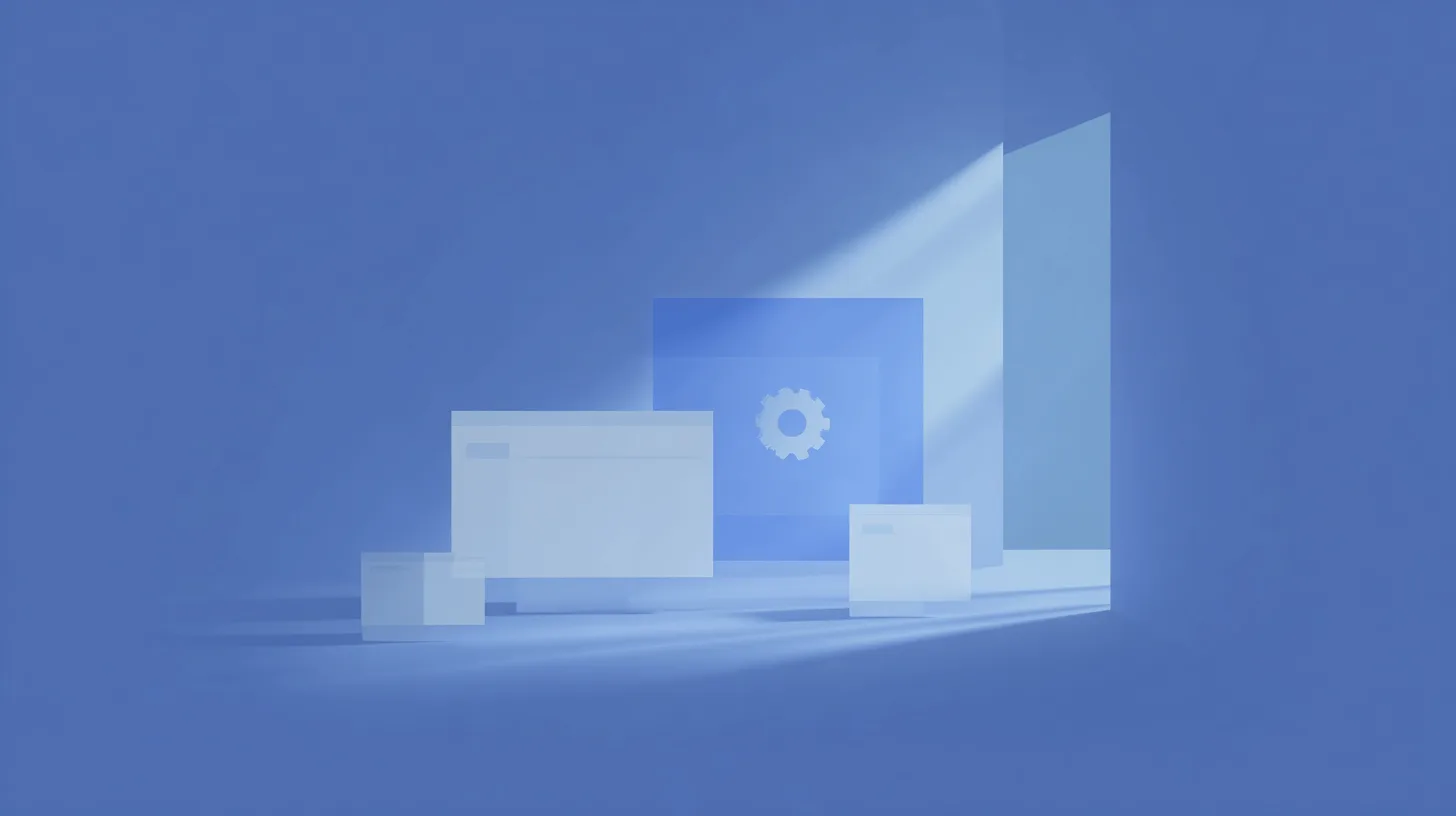TL;DR: No, COM Surrogate (
dllhost.exe) is a legitimate and essential Windows system process used for displaying file thumbnails and other tasks. It’s rarely a virus, but malware can impersonate it. We’ll show you how to check in 30 seconds.
You’re casually scrolling through your Task Manager to figure out why your PC is a bit sluggish, and then you spot it: “COM Surrogate.” A rather intimidating name, isn’t it? The first reaction is often the same: a brief moment of panic. Is it a virus? Spyware?
Relax. In 99% of cases, it’s an old friend of Windows that means you no harm. Let me simply explain what it does and, more importantly, how you can make sure everything is okay on your machine.
🤔 What Exactly Is COM Surrogate?
To put it simply, COM Surrogate is a “sacrificial” process created by Windows. Its purpose is to host and run potentially unstable extensions outside of your system’s critical processes.
Your System’s “Butler”
Imagine Windows File Explorer is a VIP guest at a fancy restaurant. It wants to display a thumbnail for a video file you just downloaded. But what if the “codec” needed to read this video is poorly programmed, or the file is corrupt? If File Explorer tried to handle it directly, it could crash spectacularly. Your entire desktop, your taskbar… everything would freeze.
To avoid this drama, Windows is smart. It calls on a “butler”: COM Surrogate. It tells it, “Here, take care of generating this preview for me. If something goes wrong and you crash, it’s no big deal. The guest (File Explorer) will just be informed that the task failed, but they will remain perfectly stable.”
That’s precisely the role of COM Surrogate: to act as a safety intermediary.
dllhost.exe, Its Real Stage Name
If you look in the “Details” tab of the Task Manager, you won’t see “COM Surrogate,” but its actual filename: dllhost.exe. This name is a bit more telling for techies: it’s a “host” for DLL files (Dynamic Link Libraries), which are code libraries used by many programs.
COM Surrogate is just the descriptive name Windows gives to dllhost.exe when it’s being used to host COM objects, a developer technology documented by Microsoft.
✅ What Does It Do in Practice? The Thumbnail Example
Its most common and visible job is generating thumbnails (previews) for your files. When you open a folder containing images, videos, PDFs, or even Office documents, you see small previews. That’s COM Surrogate working behind the scenes to create them.
Without it, a single exotic or corrupted video file could crash your entire Windows Explorer. Thanks to it, the worst that can happen is you’ll see a generic icon instead of the thumbnail, but your system will remain stable. It can also be used by other software that installs extensions for Explorer.
🚨 Can COM Surrogate Be a Virus?
This is the question that probably brought you here. The answer is yes, it’s a possibility.
The real dllhost.exe process itself is not a virus. But because it’s a common and legitimate-looking system process, malware creators love to disguise their creations as COM Surrogate to go unnoticed. They create a malicious file, name it dllhost.exe, and hide it in a corner of your system.
Red Flags to Watch Out For
Although the process is usually harmless, certain symptoms should alert you:
- High CPU or RAM usage: The real COM Surrogate uses very few resources, except for short spikes when you open a folder full of new media. If you see it consistently using more than 5-10% of your processor at rest, it’s suspicious.
- Constant crashes: A “COM Surrogate has stopped working” notification that pops up repeatedly might indicate a corrupt codec… or malware.
- Multiple processes running for no reason: Having one or two instances is normal. Seeing a dozen running constantly is stranger.
- Bizarre errors or pop-ups.
🕵️♂️ How to Check if the Process Is Legitimate (The 30-Second Check)
Fortunately, unmasking a fake COM Surrogate is incredibly easy. There’s only one thing you need to check.
The Only Thing to Verify: The File Location
Follow these steps; it really only takes a few seconds:
- Open the Task Manager by pressing Ctrl + Shift + Esc.
- If you see a simplified view, click “More details.”
- Go to the Details tab.
- Find
dllhost.exein the list (you can click the “Name” header to sort alphabetically). - Right-click on
dllhost.exeand select Open file location.
The Verdict: System32 or Nothing
File Explorer will open directly to the folder where the executable is located.
- If the folder is
C:\Windows\System32, you can breathe easy: it’s the legitimate Windows process. You have absolutely nothing to worry about. - If the folder is anything else (for example,
C:\Users\YourName\AppData,C:\ProgramData,C:\Temp, or another weirdly named folder), that’s a major red flag. You are almost certainly dealing with malware.
Loïc’s Insight: This is truly the foolproof method. Malware can’t (except in extreme cases) replace the original file in the protected
System32folder. So, they are forced to place themselves elsewhere and try to trick the system. This simple check is enough to expose them.
To sum it up:
| Characteristic | ✅ Legitimate Process | 🚩 Potential Malware |
|---|---|---|
| Location | C:\Windows\System32 | Any other folder |
| Filename | dllhost.exe | Can be misspelled (e.g., dIlhost.exe) |
| CPU Usage | Low, with short spikes | Consistently high at rest |
| Description | COM Surrogate | Often blank or suspicious |
🛠️ My COM Surrogate Is Causing Problems: What to Do?
Case 1: You’ve Confirmed It’s Malware
If the location check revealed a suspicious file, don’t panic and don’t try to delete it manually. You might leave parts of the infection behind.
- Run a full scan: Use the antivirus built into Windows, Microsoft Defender. It’s very effective. Go to
Settings > Privacy & security > Windows Security > Virus & threat protectionand run a “Full scan.” - Get a second opinion: To be sure you’ve cleaned everything, it’s a good idea to use an on-demand anti-malware scanner. Malwarebytes Free is an excellent, well-respected option. Install it and run a scan.
Case 2: It’s Not a Virus, but It Crashes or Uses Too Much CPU
If the file is indeed in System32 but you’re experiencing crashes, the culprit is likely a faulty third-party codec or extension.
- Identify the culprit: Try to notice if the crash occurs when you open a folder containing a specific file type (e.g.,
.mkvvideo files or.cr2photos from your camera). - Update everything: Make sure your graphics drivers are up to date, as well as any recently installed software (video players like VLC, image viewers, PDF readers, etc.).
- Repair system files: As a last resort, you can ask Windows to check the integrity of its own files. Open the Start Menu, type
cmd, right-click on “Command Prompt,” and choose “Run as administrator.” Then, type the commandsfc /scannowand press Enter. Let the process finish. This is a safe procedure explained on Microsoft’s page for the System File Checker (SFC) tool.
❓ FAQ: Your Questions, Our Clear Answers
Can you disable COM Surrogate?
No, and you absolutely shouldn’t try. It’s an essential component for the proper functioning of the Windows interface. Blocking it would lead to problems, like the loss of thumbnails and general instability.
Why are there sometimes multiple COM Surrogate processes?
This is completely normal. For stability reasons, Windows can launch multiple instances of dllhost.exe to isolate different tasks from each other. As long as each instance points to the file in C:\Windows\System32, there’s no reason to worry.
Does Microsoft’s COM Surrogate process collect my data?
No. The legitimate Windows process is a local tool that does not communicate personal information over the Internet. Its role is purely functional. However, a piece of malware impersonating it could, of course, act as spyware. Hence the importance of checking its location!




